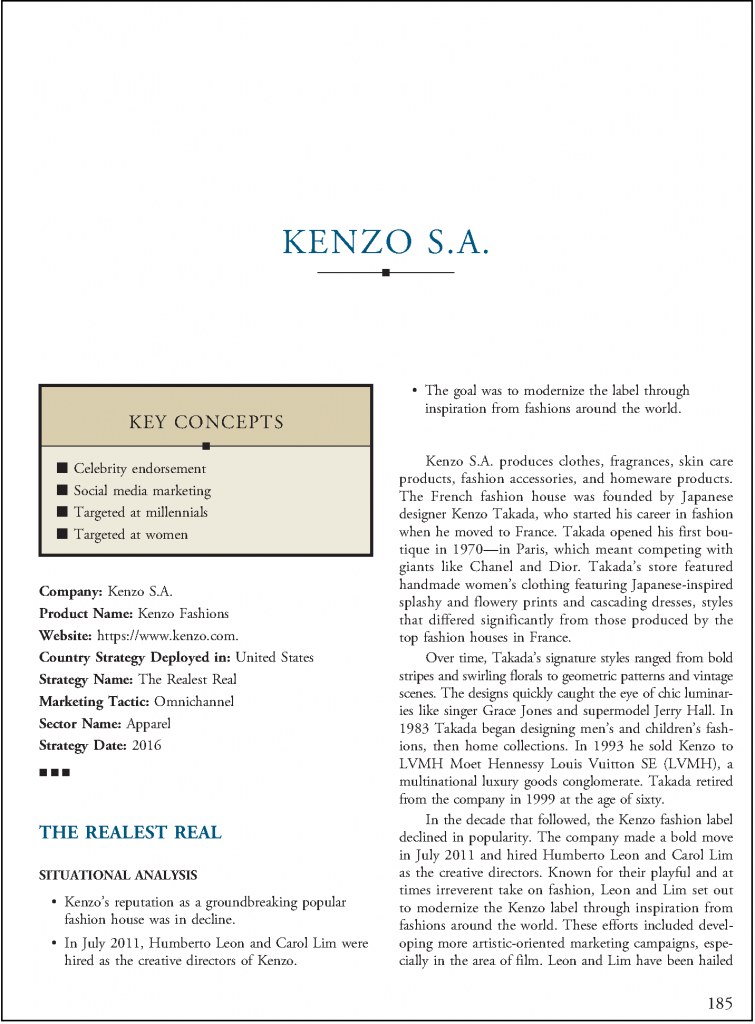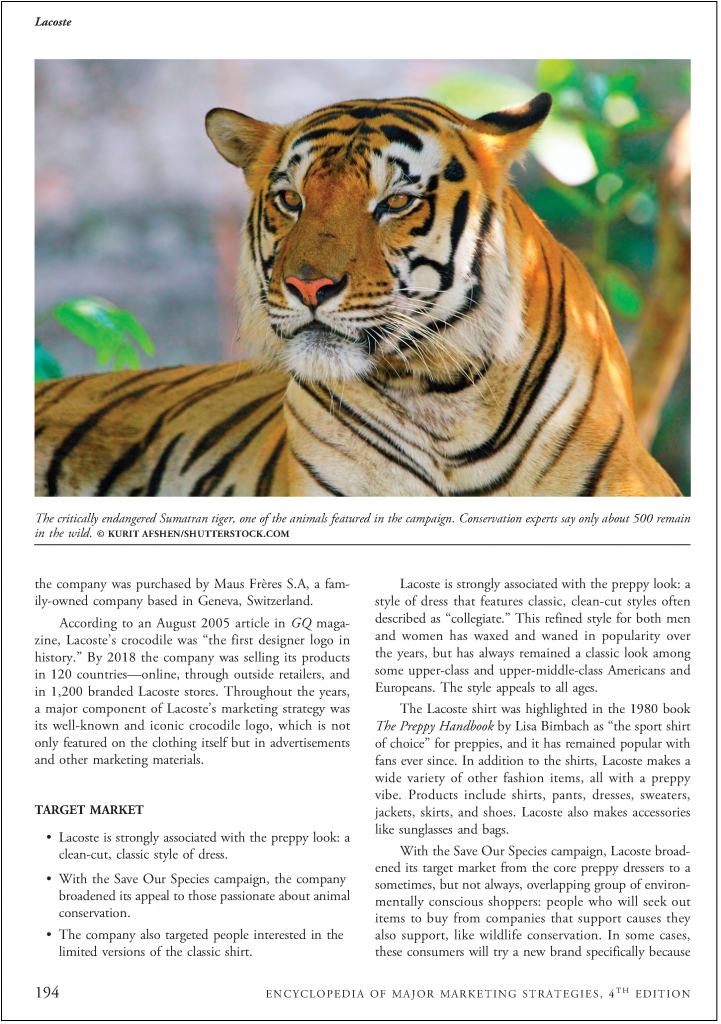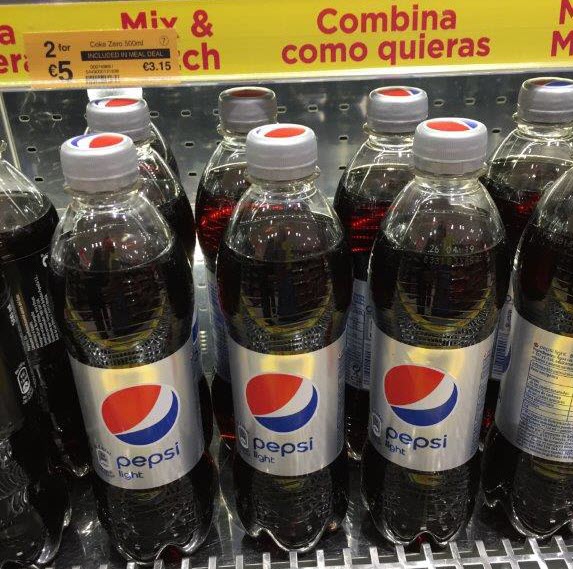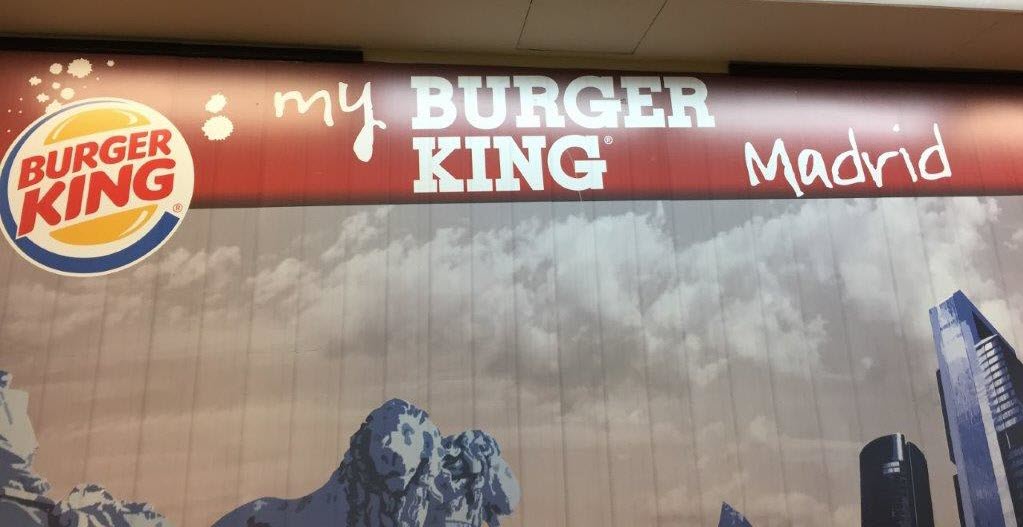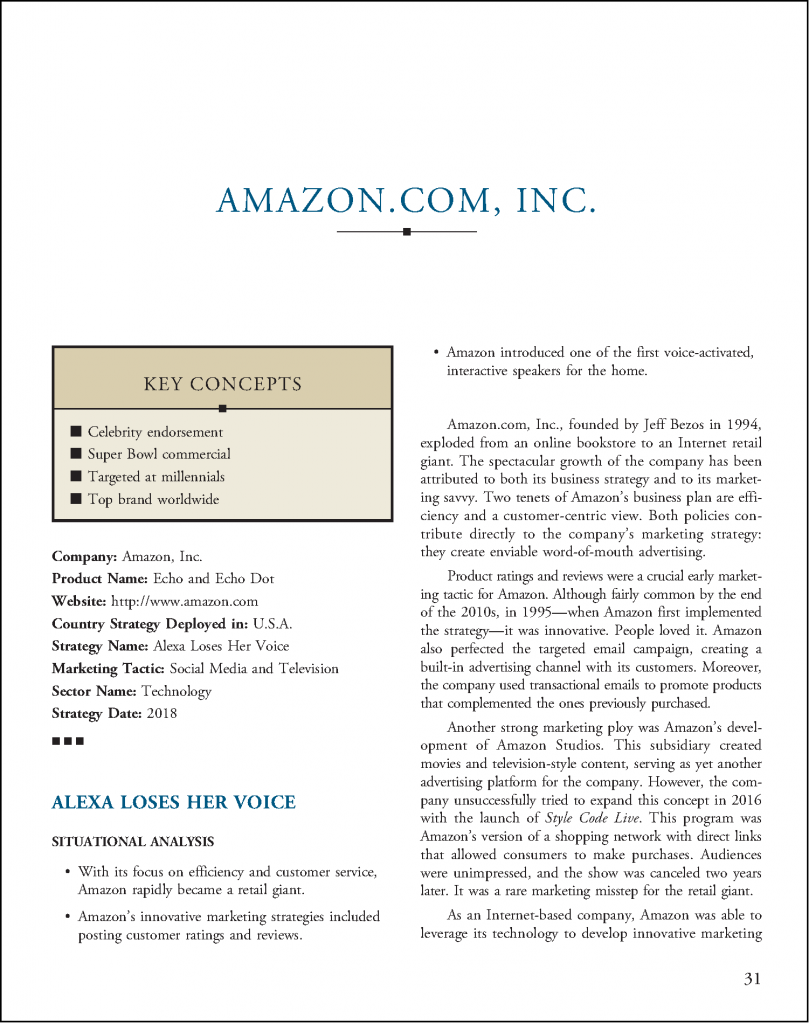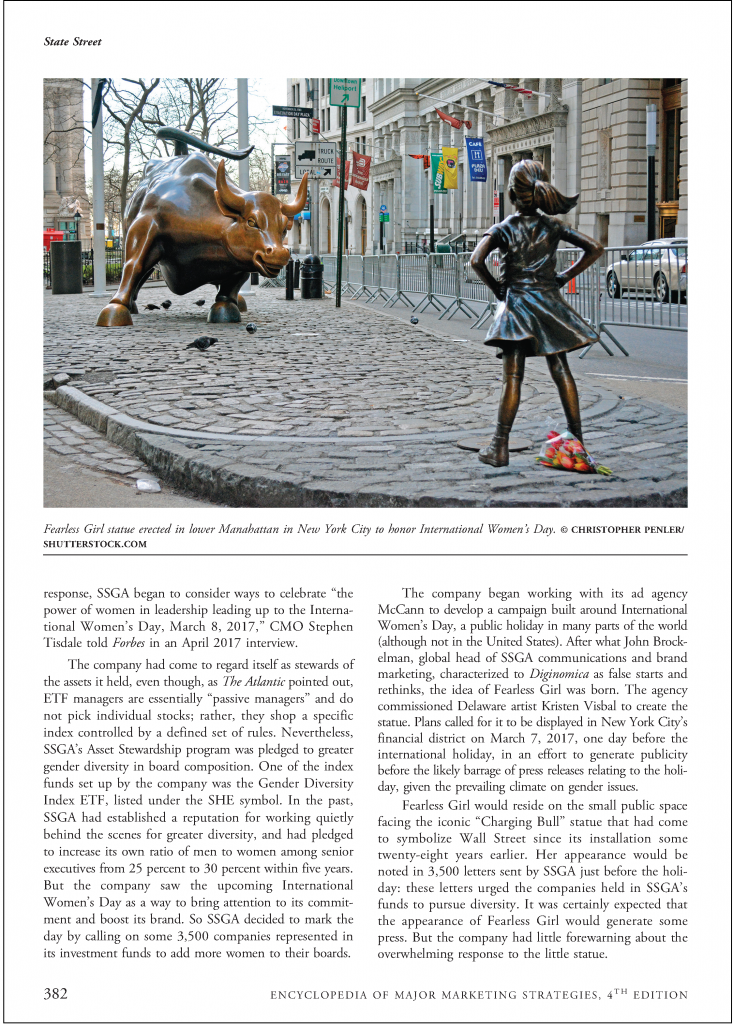| By Matt Miskelly |

Anyone who knows me knows I love to travel. A lot. And that’s how I found myself in Granada, Spain, a few months ago. Beautiful city. If you need proof, check out the photo above: me enjoying the Mirador San Nicolás, perhaps the best lookout I’ve ever looked out from. Far in the background, you can see the Alhambra, which gobbled up almost one hundred of my euros the previous afternoon.
My journey back to the States took me through Madrid, where I faced a brutal five-hour layover at Madrid-Barajas Airport. Brutal, I say, because my flight out of Granada departed at six thirty in the morning. That meant a 4:15 AM wake-up call, and I’m not typically an early riser, as anyone on my team will tell you.
Time was crawling by. I tried to keep myself busy, but the clock wouldn’t move. So I wandered over to the airport shops, where I stumbled into a journey through our new eBook, Encyclopedia of Major Marketing Strategies, vol. 4.
There I was, on autopilot, dog-tired, almost bumping into people, when something caught my eye: a display of men’s and women’s cosmetics, most of the products with a long and barely pronounceable name. But I didn’t stop to buy something (please, I use Irish Spring and Speed Stick and Crest and that’s about it). No, it was the name above the shelf that grabbed my attention.
“Hey,” I thought, “Kenzo. I know them. They have a chapter in EMMS.”
Yes, the dreaded acronym, that’s where the blog veers into Gale territory. EMMS stands for the Encyclopedia of Major Marketing Strategies, the title to which I devoted a healthy portion of my 2018. The book examines 100 of the most notable marketing campaigns of the last few years. And we’re not just talking cars, cola, and laundry detergent. EMMS also profiles dozens of strategies covering social issues like human rights, poverty, and the environment.
And what’s Kenzo? It’s an upscale fashion house created by Japanese designer Kenzo Takada in 1970. But I’d never heard of the company until last year when they appeared in EMMS for their 2016 marketing strategy “The Realest Real.” The centerpiece of the campaign was a six-minute film—starring Mahershala Ali and Natasha Lyonne and directed by Portlandia’s Carrie Brownstein—that examined the blurry and sometimes creepy line between social media and real life. That marketing campaign was the first thing I thought of when I saw the Kenzo logo there in a store 6,000 miles from home. Perhaps I needed a longer vacation.
But wait, there’s more, as they say in the marketing world. Next to the Kenzo display stood a shelf of products from Lacoste, another company represented in EMMS. For their 2018 “Save Our Species” campaign, the French clothier produced 1,775 limited-edition polo shirts with a critically endangered species replacing the famous crocodile logo. Animals stepping into the preppy limelight included the Sumatran tiger, northern sportive lemur, and Javan rhino. The shirts sold out fast: Some are now going for over $1,000 on eBay.
A few minutes later I twisted through the maze of liquor shelves in the center of the shop. Whiskey, vodka, rum, tequila, brandy, gin, vermouth, everything. And the prices were flat-out obscene; you could’ve spent a small fortune over there. I didn’t partake, but I did find two more companies with essays in EMMS: Bacardi (“Break Free”) and Jim Beam (“Make History”).
I had a crazy idea: How many companies with essays in EMMS could I find just by wandering around Madrid’s airport for the next few hours? There are worse ways to kill time. Besides, I thought it might be fun.
(It doesn’t take much to amuse me.)
The search began. Nothing else in the duty-free shop, but Hudson News was a gold mine. The little convenience store yielded six brands with marketing campaigns profiled in EMMS: Coca-Cola (“Pool Boy”); Pepsi (“Live for Now Moments Anthem,” the disastrous Kendall Jenner commercial); Skittles (“Give the Rainbow”); Nestlé (“Pure Life Begins Now”); the New York Times (“#MeToo Truth”); and Ariel (“Dads Share the Load”). That brought the number up to 10. By this time, I was taking pictures so I’d have an accurate count, and when I opened the cooler door and grabbed a photo of a few bottles of Pepsi, the cashier gave me a suspicious look.
I moved on. At the end of the concourse, near the airport tram station, I spotted a large Uber placard: their “Move Forward” campaign, which ran in India, was featured in EMMS.
And it was a grand slam in the noisy electronics store: a big Visa sticker on the window (Visa’s “Resetting Finish Lines” campaign ran just ahead of the 2018 Winter Olympics); Apple (“Earth – Shot on iPhone,” a not-so-subtle comment on Trump’s environmental policy); Samsung (“Ostrich,” which used humor to promote Samsung’s virtual reality technology); and Vodafone (the British telecom giant’s “Mohamed Salah” campaign was big in Egypt, home country of the soccer star).
I walked over to the Vodafone display, took out my phone, and lined it up for a perfect shot.
“No fotos, por favor!” said the clerk in a polite but firm voice. I apologized in halfway decent Spanish.
The number was now 15. But getting an overseas dressing down like that was embarrassing. Customers stared at me. Time for a break. There was a Burger King on the other side of the terminal; maybe some fries and a Diet Coke would lift my spirits.
It was a good call. Fast food works wonders, even airport fast food. And I stumbled upon the best trinket in all of Spain: a ketchup packet with the Burger King and Heinz logos. Both companies have essays in EMMS. That made 17, although two logos on the same packet should be a double-point bonus or something.
But I must say a few words about these two campaigns: They are among the most unconventional strategies in the entire book. Burger King’s “Google Home of the Whopper” ad hijacked your smart phone—if you were close enough to a television as the commercial aired—and tricked your virtual assistant into reading off the ingredients of the Whopper. Meanwhile, “Pass the Heinz” is one of the best-known campaigns in EMMS. It’s certainly the oldest. The strategy was first pitched to Heinz management “in 1968” by Don Draper on AMC’s Mad Men, the Emmy-winning drama set in the 1960s.
Those pretend Heinz executives rejected Draper’s idea. But real Heinz executives liked the concept so much they turned it into a genuine marketing campaign half a century later (half a century from a fictional perspective—that episode of Mad Men actually ran in 2013).
“The Pass the Heinz campaign featured both print advertisements and billboards placed around New York City. The strategy was also supported on the brand’s social media accounts. The campaign involved three different images--one of French fries, another of a thick cheeseburger, and a third a piece of steak on a fork--all without ketchup and featuring no text except the tagline, “Pass the Heinz.” The ads were designed to look exactly like those developed by Don Draper and his fictional Sterling Cooper Draper Pryce agency in Mad Men. Anselmo Ramos, chief creative officer of DAVID Miami, the ad agency that worked on the real Heinz campaign, said in a March 2017 story by Tim Nudd in Adweek, “We didn’t have the files, so we had to do a photo shoot. It needed to look exactly the same, and that was a beautiful challenge.” In another nod to the television show, the recreated ads were credited to both agencies: DAVID Miami and Sterling Cooper Draper Pryce.” (Encyclopedia of Major Marketing Strategies, Volume 4, page 149)
It was past ten o’clock, and I wondered if my flight had its gate assignment. I strolled over and checked the big board: nothing yet, but I found two more companies in EMMS. Guess what line of business they’re in? Yep, air travel. Both Delta (“Dating Wall”) and Turkish Airlines (“Explore More”) had planes headed out of Madrid that morning.
Delta’s my preferred airline, so let’s give them a few minutes of free advertising. Dozens of essays in EMMS profile campaigns that targeted millennials through social media. But Delta really went after them with the Dating Wall.
“To reach single millennials, Delta partnered with the popular dating app, Tinder. Although Tinder users could write a bio, like any dating site, photographs were the decisive factor of the selection process for most users. A picture that conveyed a passion for travel was more likely to catch the eye of a person with similar interests than mentioning it in a short narrative. Delta conceived of an integrated campaign that would deliver its message across both traditional and social platforms. The traditional advertising, in this case, was an outdoor mural [in the Williamsburg section of Brooklyn] depicting preeminent travel destinations, which was meant to serve as an interesting backdrop for selfie photos that could be uploaded to a Tinder profile. The imitation travel photos weren’t meant to fool anyone, since the backdrops were illustrated on a telltale brick wall. The selfies were just a fun way to add some panache to an online dating profile.” (Encyclopedia of Major Marketing Strategies, Volume 4, page 90)
The two airlines boosted my tally to 19. (Speaking of “19,” too bad that Dating Wall wasn’t around when I was in college.)
I noticed an empty seat at one of those recharge-your-phone kiosks, so I hurried over and settled in for a while. Long flight over the Atlantic, I wanted that iPhone battery at 100 percent. But I didn’t neglect my duties: For an hour, I scanned the crowd for any sign of EMMS.
And I got five more. People walking around in Adidas (“Calling All Creators”) and Nike (“Breaking2”) sneakers. A teenager sporting a Black Panther T-shirt (EMMS has a great essay on the marketing for the 2018 Marvel blockbuster film). Some guy on his Kindle, the Amazon logo there on the back (Amazon tapped Cardi B, Rebel Wilson, and Anthony Hopkins to star in “Alexa Loses Her Voice,” a spot that aired during the Super Bowl).
And directly across the aisle sat a young woman with a blazing orange backpack resting at her feet. It took me forever to notice the REI logo stitched to the canvas, though it was staring me in the face the whole time. But I’m glad I saw it: REI’s campaign for “Paul’s Boots” is one of my favorites.
Paul Evans, a middle-aged man from Queensland, Australia, was an avid hiker with a lifelong dream: to tramp the Appalachian Trail in the eastern United States. He even had three pairs of hiking boots set aside for the occasion. Unfortunately, Paul was hit with a myriad of heart problems and died before he could make the trip.
M’Lynn, Paul’s widow, just couldn’t bring herself to give the boots to charity. Not yet, anyway. One night she emailed Fitz Cahall, host of the outdoors and adventure-themed podcast The Dirtbag Diaries, and relayed her husband’s story.
“M’Lynn’s email to Cahall read: “Dear editor, my Australian husband of 17 years spent the last few months of his life polishing his hiking boots. Paul was completely drawn into hiking the Appalachian Trail…and as I look over at his freshly polished boots, it makes me wonder: How good would it be for his boots to make that journey?“ She asked for Cahall’s help to find [three] hikers who would be willing to wear the boots on ”at least one good walk” on the Appalachian Trail. Cahall immediately was drawn into the story. He contacted REI for support into turning it into a documentary film.” (Encyclopedia of Major Marketing Strategies, Volume 4, page 330)
But Cahall was thinking much bigger than simply “one good walk.”
“Paul had been a large man. Cahall and his team realized that it would be difficult to find three people with size 13 feet willing to hike a trail that covered 2,189 miles through fourteen states from Georgia to Maine. On the podcast they laid out the plan: “What we’re going to do is put together an Olympic Torch style relay of people to wear or carry Paul’s boots down the AT.“ They created the hashtag #PaulWalksOn to get the story out on social media and throughout the outdoor community.
After putting out the call for help, Cahall was flooded with more than 400 emails. Incredibly, most people who responded had no plans to hike the Appalachian Trail until they heard M’Lynn’s story, which apparently struck a chord with their own unfulfilled goals and dreams.” (Encyclopedia of Major Marketing Strategies, Volume 4, pages 330-331)
If you like the outdoors, or just a good story, Paul’s Boots is still on REI’s YouTube page. It’s 37 minutes I highly recommend.
Back to me at the airport. My tally now stood at 24. And my battery now stood at 88 percent. Close enough. I finally had my gate assignment. Time to say adios to Spain.
On the long walk to Gate C42 I passed a little schoolgirl with a ponytail. She stood with her parents at the big Welcome to Spain information booth. What really got my attention was her backpack, which was crafted to look like a golden retriever. But something about the way the girl had her chin turned up, almost defiantly, brought to mind Fearless Girl, the revered statue that faced down Wall Street’s charging bull in Lower Manhattan. EMMS calls her “a prop for twittering politicians, a go-to landmark for tourists, and a rallying point for little girls and grandmas.”
Add Fearless Girl to the list.
That made the final tally 25. Not too shabby. Okay, technically I didn’t see any sign of State Street Global Advisors, the company behind the “Fearless Girl” campaign. And no, the little girl I saw in the airport wasn’t a statue. So you got me: I kinda cheated on number 25. But no biggie. Wouldn’t be the first time I tweaked the inclusion criteria to boost entry count.
Twenty-five. Exactly one-quarter of the essays in the book, and I found them by simply wandering around an airport terminal on another continent. That’s a pretty good advertisement for the level of international coverage in EMMS. And if those 25 campaigns sound supercool, do the math and you’ll see there are 75 more supercool marketing campaigns in the book. Moreover, all 100 essays were loaded to our Small Business Resource Center in May, so you can also check them out there. That just about wraps up my Madrid adventure. Now, if you’ll excuse me, I’m going to go add “Created and managed international marketing project in Spain” to my LinkedIn profile . . . .
Encyclopedia of Major Marketing Strategies, Vol. 4 is available in print and eBook format on GVRL.
 Meet the Author
Meet the AuthorMatthew Miskelly sported a fabulous mop of dark brown hair when he started working at Gale in 1996, and he has never quite gotten over its disappearance. Nonetheless, he has soldiered on, managing titles like the Directory of Special Libraries and the Encyclopedia of Major Marketing Strategies. He loves to travel: in the past five years alone he has kayaked in Costa Rica, strolled down the streets of Budapest, and jumped from a plane flying 12,000 feet over Queenstown, New Zealand. When he’s not traveling he enjoys reading, writing, hockey, and shamelessly name-dropping all the incredible places he’s checked off the travel list (oh, that reminds me: Ecuador, Lisbon, and the Canadian Rockies).


